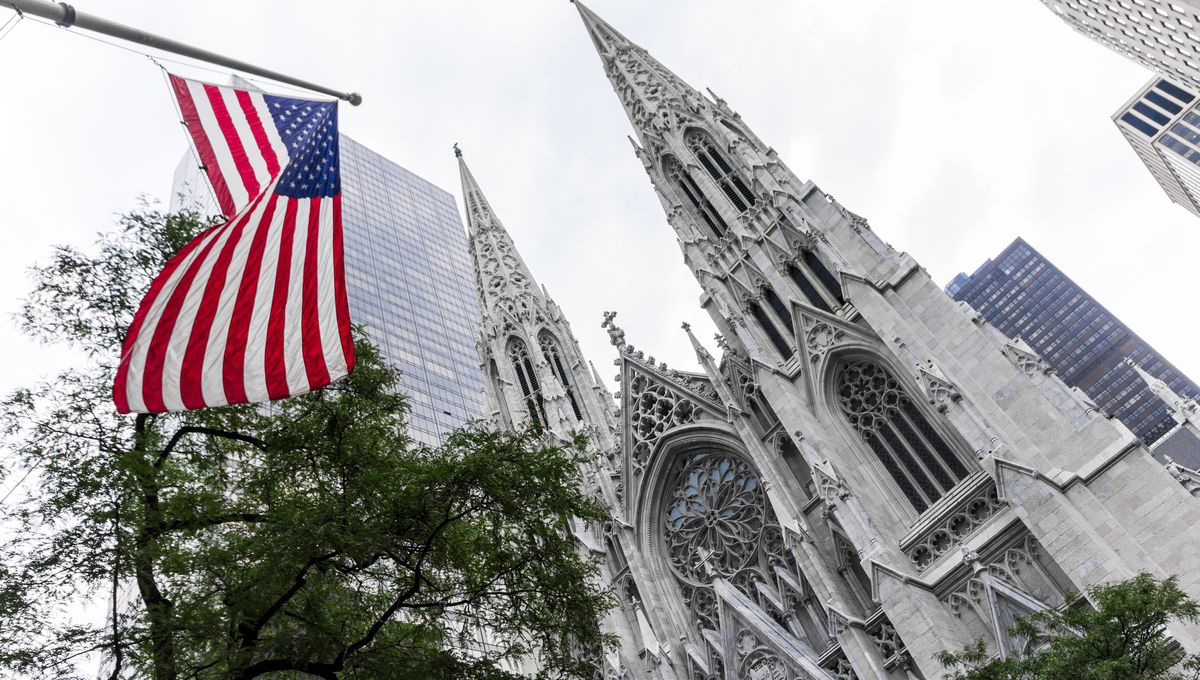
The US remains a deeply religious – and deeply Christian – place, especially compared to other high-income “Western” countries. However, dig into the data and you’ll find the nation’s religiosity varies wildly from state-to-state and contains a fair amount of diversity.
According to the 2020 US Religion Census, the states with the highest percentage of their population that’s actively involved in religious congregations: are Utah (76.1 percent), Alabama (63.6 percent), Louisiana (63.3 percent), Oklahoma (61.2 percent), and Mississippi (59.4 percent).
On the opposite end of the spectrum, the states with the lowest rates of involvement in religious congregations are New Hampshire (27.2 percent), Maine (30.8 percent), Oregon (33.2 percent), Montana (34.8 percent), and Alaska (35.2 percent).
While Utah is commonly cited as the most religious state, it is also one of the least religiously diverse. Up to 65 percent of the state’s population are Adherents of the Church of Jesus Christ of Latter-day Saints, better known as Mormons.
The Mormon church is showing no signs of slowing down either. Between 2010 and 2020, the number of followers grew 11.3 percent from 1,910,504 to 2,126,216 people, according to a recent report from the Kem C. Gardner Policy Institute [PDF].
A 2016 poll by the Pew Research Centre asked Americans in every state if they identified as “highly religious” and reached similar, although slightly different, results. The top five states were: Alabama (77 percent), Mississippi (77 percent), Tennessee (73 percent), Louisiana (71 percent), and Arkansas (70 percent). Utah was further down the list with 64 percent of the population identifying as “highly religious”.
Nationwide, the most followed religious tradition is Protestantism, which accounts for around 49.2 percent of religious people, as per the US Religion Census. This is followed by Catholicism (38.4 percent), Latter-day Saints (4.2 percent), Islam (2.8 percent), and Judaism (1.3 percent).
There is evidence that the US is becoming less religious, though. In 1972, up to 90 percent of Americans identified as Christian. By 2020, that number had slipped to about 64 percent, while around 30 percent reported being religiously unaffiliated and all other religions – including Judaism, Islam, Hinduism, and Buddhism – accounted for just 6 percent of the population.
A 2022 report by the Pew Research Centre looked into how different demographic changes could drive this trend in the decades ahead. If “religious switching” – whereby people don’t identify with the religion they grew up with – among young Americans continues at current rates, Christians would slip below 50 percent of the population by 2060, accounting for 46 percent of the population in 2070.
If the rate of switching increases, the percentage of Christians in the US could fall to between 35 and 39 percent by 2070. The proportion of religiously unaffiliated Americans could rise to around 52 percent.
Source Link: Which US State Is The Most Religious?